Are you about to pack your suitcase and don’t know where to start? Don’t worry—it happens to all of us. That’s exactly why I’ve put together this travel packing list, perfect for everything from weekend getaways to long-term adventures. It’s designed to help you organize your luggage in a practical, stress-free way, so you don’t forget the essentials… and with a special bonus for gluten-free travelers like us!
Plan according to your travel style
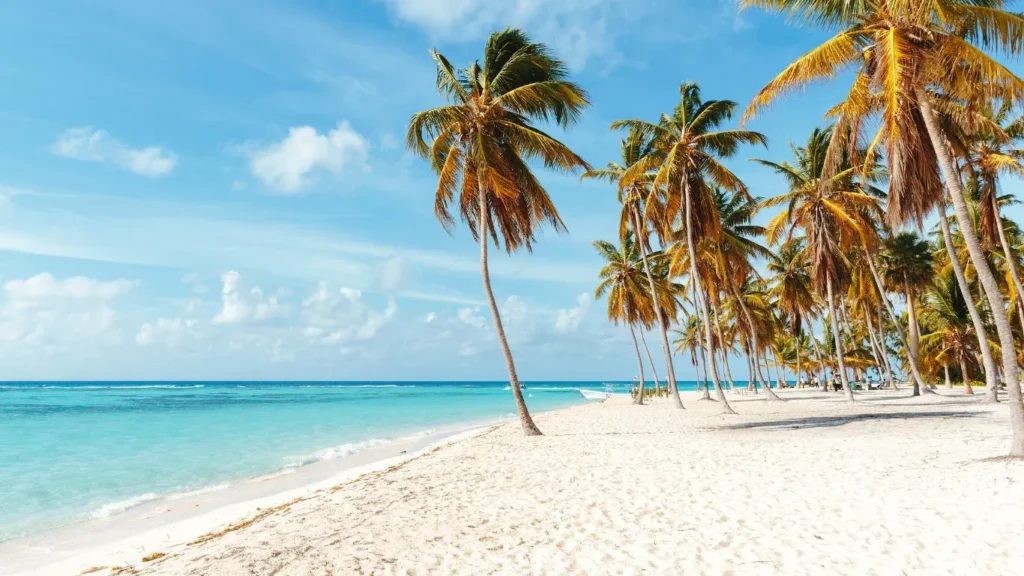
One of the keys to not overloading your suitcase -and not forgetting what is really important- is to spend a few minutes thinking about the type of trip you are going to make. Think about the type of trip you are going to make.. It may seem obvious, but many times we start to put clothes and objects without thinking well about what we really need. And of course, then the “just in case” appear and we end up carrying half a closet without using even half of it.
Before you start packing your suitcase, take a moment, take a breath and calmly answer the following questions:
- What is your destination? Is it hot or cold?
Packing for Iceland in January is not the same as packing for the Caribbean in July. Check the local climate and think about layering if there are temperature variations. - How many days will you be away?
The length of the trip directly influences the amount of clothing, toiletries and general planning. A 3-day getaway is not the same as a two-week trip. Remember that at your destination there are also stores (or should be), you don’t need to bring everything from home. - Are you traveling by plane, train or car?
The type of transportation conditions the size and weight of the luggage. By plane, for example, there are strict limits and it is advisable to think carefully about what goes in your hand luggage. - Are there baggage restrictions?
Each airline or means of transport has its own rules. Knowing them beforehand avoids surprises and possible extra costs at the airport or station. We recommend that you check their rules and if you do not find them, contact customer service. - Will you have access to a washing machine or laundry facilities?
If you can wash clothes during the trip, you don’t need to carry so many changes of clothes. That saves space and weight. - Are you going to do urban tourism, nature, beach or a mix?
The type of activities makes a difference. For long walks you will need comfortable shoes; for the beach, light clothing; for hiking, basic technical equipment.
By answering these questions, you’ll be able to tailor your suitcase to your specific needs, focusing on what truly matters for your trip. Because every adventure is unique—and your luggage should be too.
Travel to-go list: Must-have essentials
Essential documents for your trip
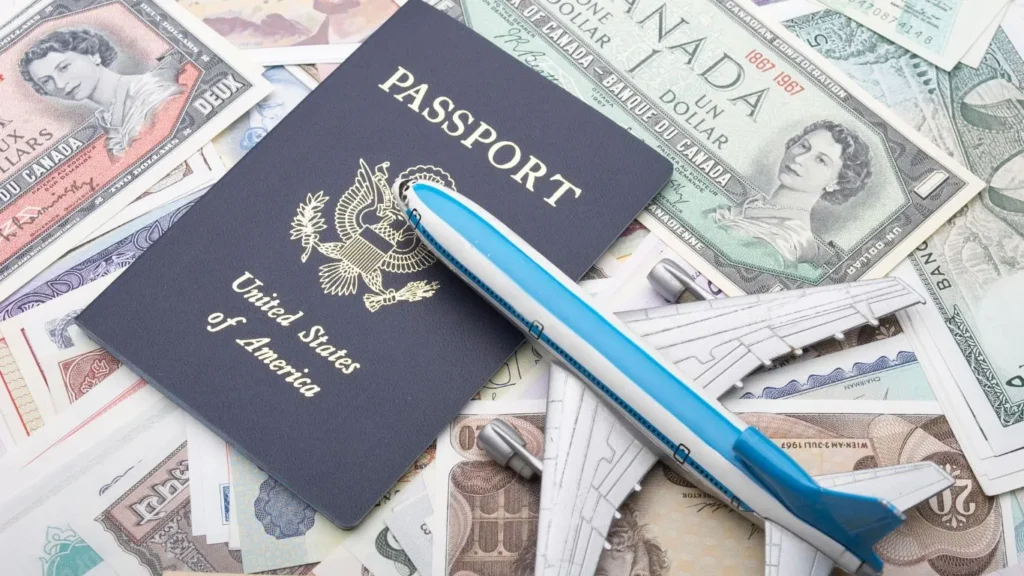
Travel documents are one of those things we often overlook… until we realize they’re missing. Having everything you need on hand can mean the difference between starting your trip stress-free or with a major headache. Here’s what you should never leave behind:
Valid ID card or passport
Make sure your passport is valid for the entire duration of your trip—and ideally beyond. Many countries require at least six months of validity from your date of entry. If you’re traveling within the Schengen Area, your national ID card may be enough, but it’s always best to double-check before you go.
This passport cover is practical, beautiful and will be your best ally to travel with peace of mind. We all have this passport cover. We bought it when we went to Marrakech.
- Funda Pasaporte + Etiquetas Maletas Viaje: Nuestro combo porta pasaportes incluye 1 porta pasaportes y 1 etiqueta de equ…
- Cierre De Botón a Presión y Protección De Seguridad: El titular del pasaporte con el diseño de cierre magnético oculto b…
- Práctica Funda Organizadora Para Pasaporte: 4 ranuras normales para guardar al menos 4 tarjetas de visita, tarjetas de c…
- European Health Insurance Card or travel insurance
If you are traveling in Europe, apply for your European Health Insurance Card to have access to public health care in the country of destination. For trips outside Europe or destinations with expensive healthcare systems (such as the USA, Japan or Australia), it is highly recommended to contract a travel insurance that covers medical assistance, cancellations and lost luggage – don’t skimp on this!
Take out a good good travel insurance for a trouble-free stay. You can enjoy a 5% discount with us.
Transportation tickets (printed or digital)
Flight, train, bus or ferry… whatever your means of transportation, always carry your tickets with you.
Nowadays everything goes on mobile, but it never hurts to have a hard copy. Some destinations have poor connections or stricter controls.
For example, in Marrakech you are required to show your airline ticket in paper. If you don’t carry it, they won’t let you pass the controls.
Lodging reservation
Print or download your reservation voucher. In some countries you may be asked for it at immigration upon arrival. Also, having it ready makes check-in much easier.
Driver’s license (and international driver’s license if traveling outside the EU)
If you are going to rent a caryou will need a valid driver’s license. For many countries outside the European Union, it is compulsory to present the international driving license. It is easy to obtain from the DGT (Dirección General de Tráfico) and is valid for one year.
Medical certificates, prescriptions or reports if you need them
If you take regular medication, be sure to carry a prescription—preferably translated into the language of the country you’re visiting. For certain treatments like insulin, you may also need a medical certificate. In some cases, these documents may be required at customs, so it’s a good idea to check in advance with your airline or official sources.
Debit or credit card and a bit of cash
Carry at least one valid bank card abroad (we recommend that you carry more than one) and be sure to inform your bank if you are traveling to another country, to avoid security blocks. It is also advisable to carry some cash in local currency, especially if you arrive late and there are no ATMs open.
For hassle-free travel, we use the N26 card. It’s great for paying and withdrawing money abroad, without worrying about the currency.

Glutendtrotters Tip:
Before leaving home, scan or take photos of all these documents and save them to the cloud (Google Drive, Dropbox, iCloud…) or email them to yourself. That way, if your documents are lost or stolen, you’ll have accessible copies from any device and be able to print them at your destination.
You can also carry a slim physical folder with your most important documents if you’re the kind of person who prefers having everything neatly organized on paper. We do the same ourselves.
Appropriate clothing according to the climate and duration of the trip
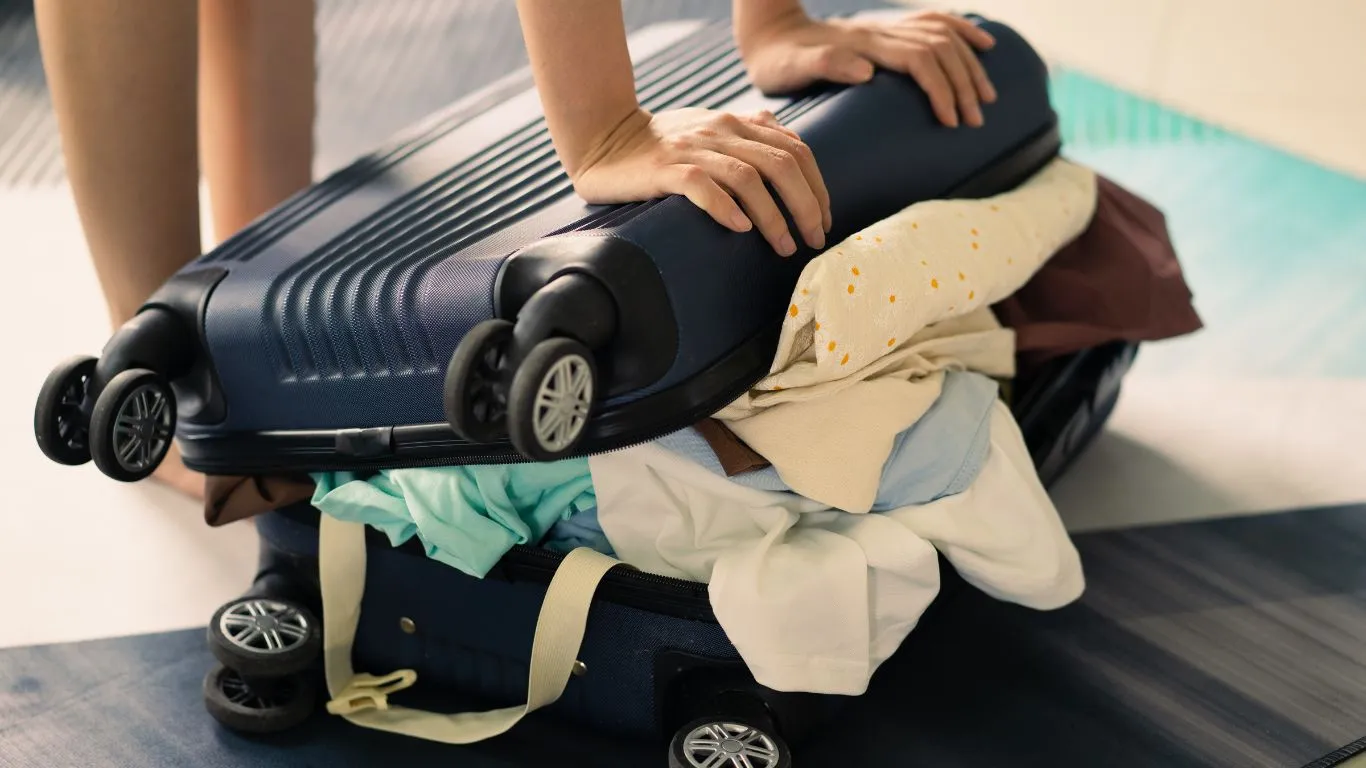
Choosing the right clothes for a trip is not just about style: it’s about practicality, comfort and, why not, saving space. Within any list of things to take on a trip, clothing plays a key role, and knowing how to select it well makes all the difference. The key is to create versatile outfits that you can easily combine with each other, and go for layering if you’re traveling to places with temperature changes.
The 5-4-3-2-1 trick: how to pack a functional and lightweight suitcase
This method is ideal for trips of up to one week and can easily be adapted for short breaks or longer trips if you have access to a washing machine:
- 5 top parts
Basic T-shirts, blouses, tank tops or long-sleeved shirts, depending on the weather. Choose neutral colors and wrinkle-free fabrics. With five, you can create up to ten different combinations if you alternate them with different pants or skirts.
- 4 parts below
Long pants or shorts, jeans, leggings or comfortable skirts. Think about the activity: technical pants if you’re going hiking, or a long skirt if you want something more dressed up but cool.
- 3 more formal outfits or dresses
Ideal if there are special dinners, museum visits, events or you just want to look more dressed up one night. A versatile black dress or a flowing jumpsuit can get you out of a lot of trouble.
- 2 pairs of shoes
One very comfortable for walking (trainers, sneakers, trekking sandals…) and the other a bit more elegant (ballerinas, moccasins, sandals with a more formal touch). If you can only carry one in your suitcase, wear the bulkiest one for the trip.
- 1 jacket or coat
It will depend on the season: a denim jacket or a light jacket in spring/summer, and a thicker coat if you travel in winter. If you travel by plane, wear it: you will save a lot of space in your suitcase.
And beyond the 5-4-3-2-1, there are basics that should never be missing:
- Comfortable underwear
Be sure to bring enough changes of clothes for the days of your trip or at least until you have a chance to wash them. Cotton or seamless underwear is ideal for long journeys.
- Nightwear
Better if it takes up little space and is made of breathable fabric.
- Socks
Include several pairs and some thicker ones if you are going to walk a lot or go to cold destinations.
- Swimsuit or bikini
Yes, even if you don’t go to the beach. A spa, a hot springs or just a surprise.
in the accommodation may make you need it.
- Accessories according to the weather
If you are traveling to cold areas, pack a hat, scarf and gloves. On the other hand, if your adventure is to warmer climates or you are going on outdoor excursions, bring a hat, a cap and good sunglasses – your comfort and your health will thank you for it!
Comfortable and practical footwear
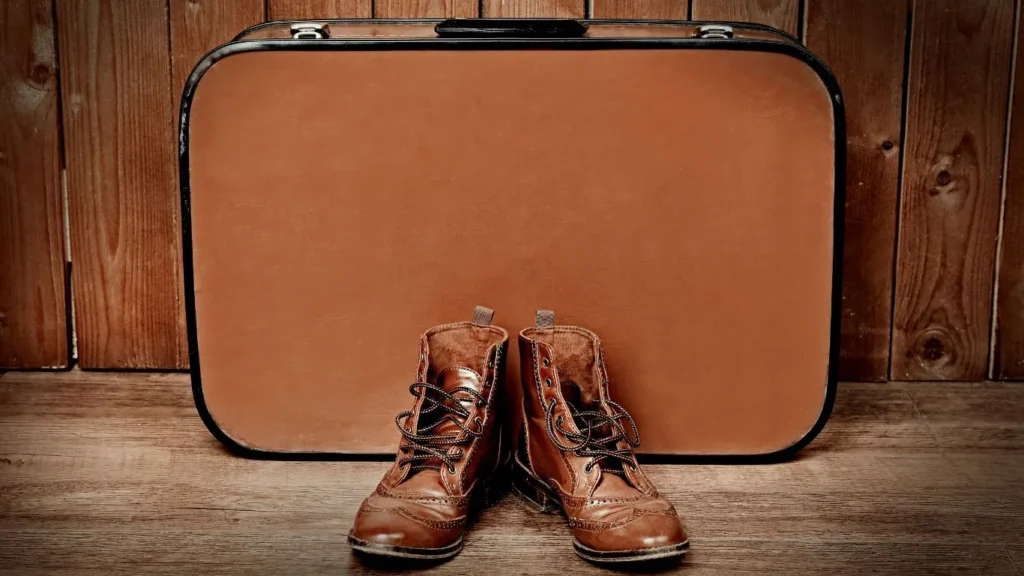
If there’s one thing that can ruin a trip, it’s an uncomfortable shoe. So choose wisely:
- Walking shoes
Ideal for long days of sightseeing or excursions. Prioritize the ones you already have used and you know that they don’t hurt you.
- Flip-flops
They are light, take up little space and have a thousand uses: for showering in shared accommodation, for walking on the beach or simply resting your feet at the end of the day.
- Slightly more formal footwear
If you plan to go out to dinner, go to the theater or just like to vary your style at night, wear a more stylish pair. But always comfortable.

Glutendtrotters Tip:
If you like to travel in style without sacrificing space, go for versatile clothing: dresses that double as kimonos, shirts that can be worn as overshirts, or zip-off pants that turn into shorts.
Toiletry bag
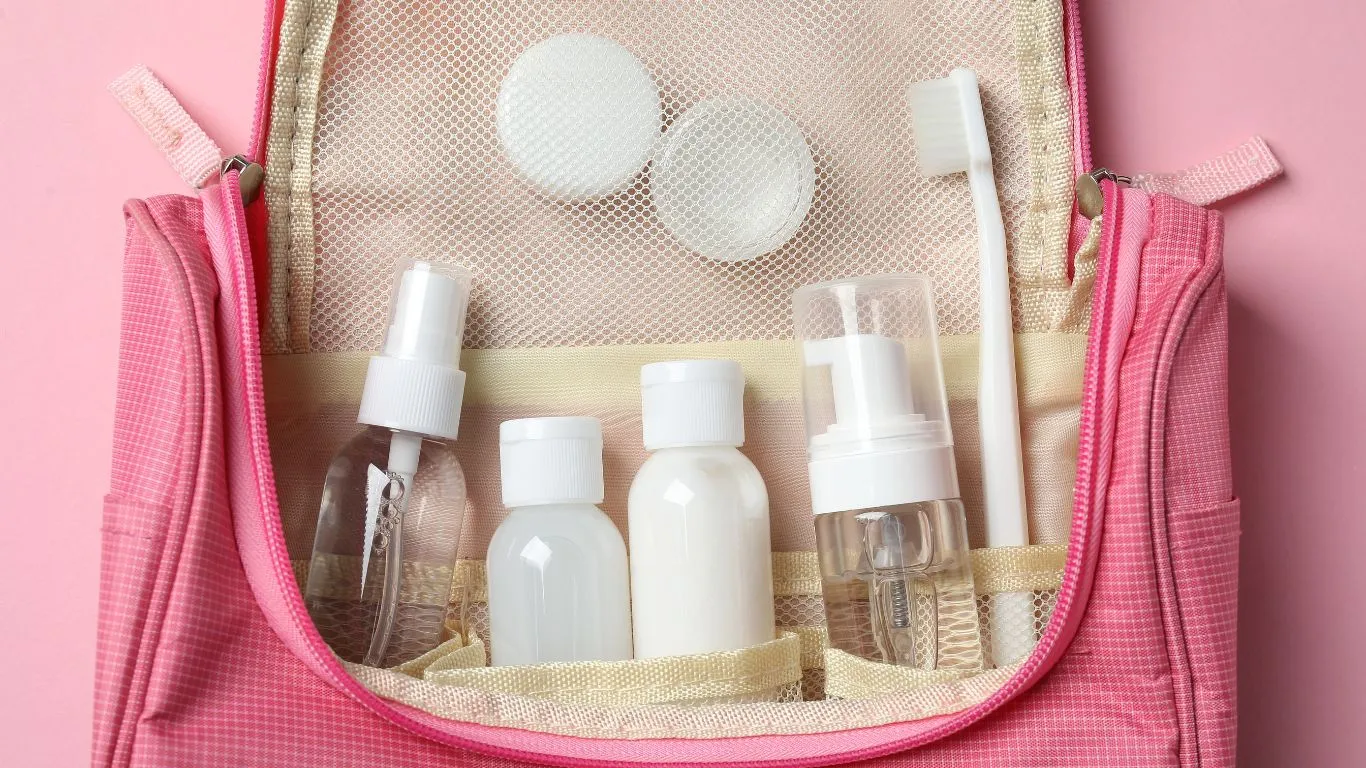
Preparing your toiletry bag can be one of the most delicate parts of packing your suitcase, especially if you are traveling by plane or with limited luggage. Although many products can be easily obtained at your destination, there are some basics that you should always carry with you to feel comfortable and ready in any situation.
Here are the essentials for a functional and practical toiletry bag:
Toothbrush and toothpaste
Hygiene basics that should never be missing. You can carry a collapsible or travel toothbrush and a small toothpaste. They take up little space and allow you to maintain your routine from the first day. Remember that toothpaste cannot exceed 100 mL if you travel by plane.
Comb or brush
Choose a compact one if you are traveling with little space. If you use a special hair product (styling cream, leave-in mask…), carry it in small reusable bottles.
Gel, shampoo and conditioner in travel format
Do you carry carry-on luggage on the plane? Remember that liquids must be carried in bottles of maximum 100 ml and the total cannot exceed 1 liter. You can carry them in a bag with zip closure. In addition, the refillable bottles are a sustainable and perfect option to keep using your usual products… and avoid surprises at the security check! We carry some very similar to the ones shown below.
Deodorant
Choose a roll-on if you fly, as aerosols can cause problems at security checkpoints. They also tend to take up less space and last longer.
Sunscreen (yes, even in winter)
Sun protection is essential at any time of the year. Choose a high protection factor if you travel to mountainous areas, snow or with a lot of sun. You can opt for a face and body sunscreen, or a multipurpose one to save space.
Basic makeup (if used)
There’s no need to carry a whole vanity case. With a light foundation, concealer, mascara, tinted balm and blush, you can be done in five minutes. If you like to wear something more special for the evenings, a strong lipstick and a versatile shadow will give you that touch.
Wet wipes and tissues
They will save you in public restrooms, excursions or unexpected events. You can carry a small pack in your backpack to have it always at hand.
Blade or epilator
If you do not have access to beauty salons at your destination or prefer to bring your own system, include a travel razor or your usual epilator if you are traveling with checked luggage.
Personal medication and basic analgesics
Always carry your usual medications with you, along with painkillers (paracetamol or ibuprofen), something for digestion and specific products if you have allergies or chronic conditions. If you are traveling by plane, it is best to carry them in your hand luggage, along with a copy of the prescription.

Glutendtrotters Tip
Use a clear, waterproof toiletry bag to avoid issues at airport security checks.
Store liquid products in a clear, sealable bag inside your toiletry kit—especially if you’re flying.
You can prepare a mini emergency toiletry kit for your handbag or backpack, with essentials for long journeys or layovers.
What if you have celiac disease or sensitive skin?
Check the ingredients of your cosmetics and toiletries, as some creams, balms or toothpaste may contain traces of gluten. Carry your trusted brands in small bottles to avoid reactions. In our case, all the products we carry are gluten-free and suitable for atopic skin.
Travel first aid kit
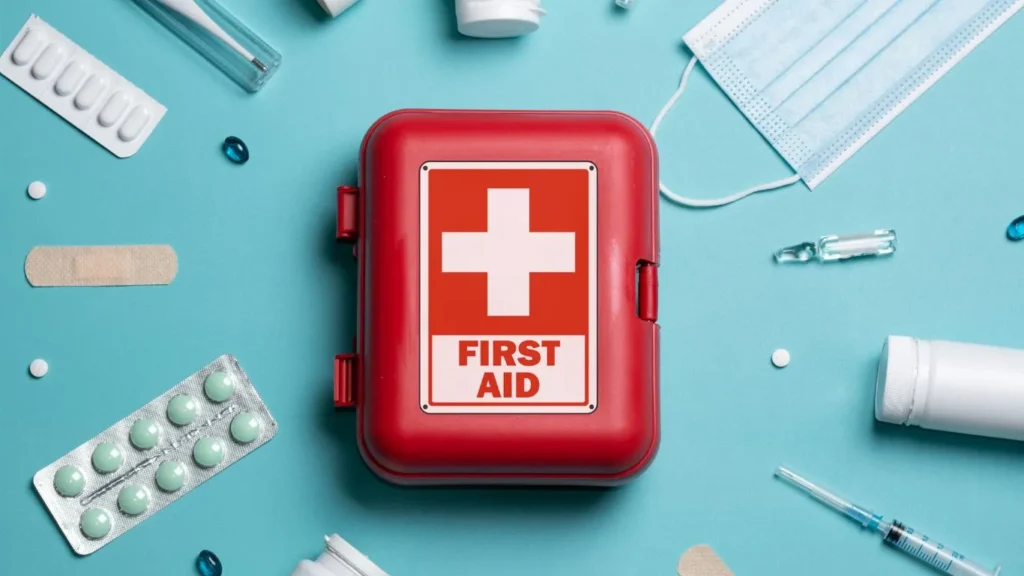
You don’t have to be a hypochondriac to carry a first aid kit in your suitcase. A simple headache, a scrape on your shoes or road sickness can ruin an entire day if you don’t have the basics. That’s why, on any list of things to bring on a trip, the first aid kit is an essential part of the list. Carrying one well thought out and adapted to your destination and personal needs is an investment in peace of mind.
- Material De Calidad Premium: Este botiquin viaje está hecho de tela Oxford de alta calidad con revestimiento interior de…
- Conveniente: Bolsillo de malla semitransparente para guardar pequeños objetos dispersos. Diseñado con cremallera metálic…
- FáCil De Transportar: Esta kit primeros auxilios es perfecta para viajar, es muy portátil y se puede llevar en el bolsil…
Here is what you should not miss:
Basic painkillers (paracetamol/ibuprofen)
For headaches, muscle aches, fever or general discomfort. If you are sensitive to one of them, take the one you usually take. There is no need to carry a whole box: a few tablets in a small pill box are enough.
Band-aids
Blisters from excessive walking or small cuts are very common during travel. Carry band-aids of various sizes and even a special one for chafing, especially if you are going on excursions or if you are wearing new shoes (not recommended unless you buy them at your destination).
Antiseptic or disinfectant wipes
To clean small wounds or cuts. A small bottle of povidone-iodine, chlorhexidine or alcohol wipes may be sufficient. They take up little space and are very useful.
Insect repellent
Essential if you travel to humid, tropical or mosquito-prone areas. Choose one with DEET if the risk of bites is high. For European destinations, a natural or mild one may be enough.
Motion sickness pills (biodramine or similar)
Essential if you are prone to motion sickness in a car, boat or plane. Always carry them in your hand luggage to take them before the trip. They are available with or without caffeine.
Oral serum or rehydration salts
Useful in case of gastroenteritis, diarrhea or dehydration due to extreme heat. They take up little space and can help you recover faster. You can also carry sachets of powdered isotonic drink.
Antihistamines
For mild allergic reactions, bites or respiratory symptoms. Ideal if you have known allergies, but also useful for unforeseen events (new foods, changes of environment, plants…).
Regular prescription medication
Do you take daily medication (e.g. thyroid medication, like Manuel)? Make sure you take enough for the whole trip. It is always better to carry medication in its original container, accompanied by the prescription or a doctor’s note, especially if you are traveling abroad or carrying special treatments such as injectables or insulin. Better to be safe than to have a scare!
Practical tips to prepare your first aid kit
- Choose a small, compact small, compact and airtight bag with hermetic closure. It is better if it is padded or has compartments to avoid that everything is loose. If you are traveling by plane and you are not going to check it in, the toiletry bag must be transparent. We recommend that you always take your usual medication with you on the plane.
- Keep the first aid kit in an accessible accessible of your luggage, especially if you are going to make long trips.
- If you will be hiking, camping, or sightseeing, consider adding:
- Small scissors
- Elastic bandages
- Splinter tongs
- Anti-blister spray or petroleum jelly
- Small scissors
- Check the expiration date of medications before packing them in your suitcase.
What if you travel abroad?
If you’re traveling internationally, make sure to check the entry requirements regarding medications. Some countries may have strict regulations and even require medical certificates for common drugs. In those cases:
- It carries the original recipe.
- Include a simple translation in the language of the country you’re visiting, along with the generic name of the active ingredient.
- Always carry medications in your carry-on luggage, especially if you need them during the flight. This way you’ll avoid hassles if your checked baggage is lost or delayed.
A basic first aid kit takes up little space but can save you a lot of hassle. And if you are traveling with children, don’t forget to include appropriate pediatric medication: digital thermometer, children’s syrup, creams for bites, etc.
Electronics and chargers
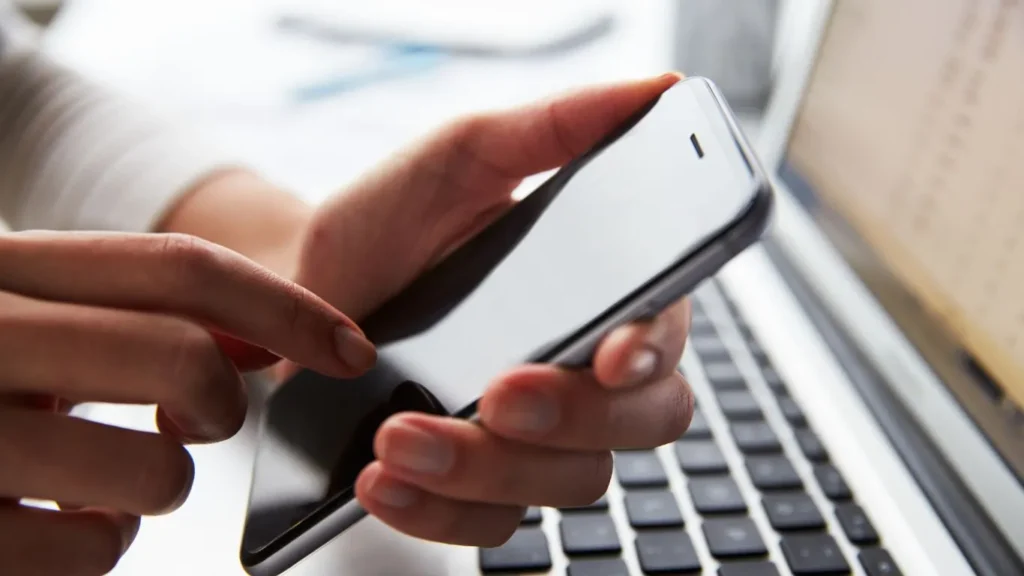
Today, it’s almost unthinkable to travel without electronic devices. From checking in online to looking up an address on Google Maps to making a video call home, we rely on technology more than we realize. That’s why carrying the right devices and not forgetting your accessories is as important as packing your clothes.
Here is a mini handy guide to the tech basics you should consider taking with you on every trip:
Mobile (smartphone)
The inseparable companion of any traveler. It serves as a camera, map, guide, translator, music player… and even as a flashlight! Before setting off, make sure it is fully loaded and with enough space for photos and videos.
Cell phone charger
It seems obvious, but it is one of the great forgotten ones. If you can, carry an extra one and always leave it in your carry-on backpack. You can also opt for a multiple charger if you are traveling as a couple or family, so you don’t have to carry one per person.
Plug adapter (if traveling abroad)
Each country has its own plug and voltage system. It has a universal adapter that works in several destinations, especially if you make stopovers or visit several countries. It is lightweight and very useful. We recommend you to read our post about the types of plugs in the world.
- Adecuado para más de 224 países: el enchufe universal está equipado con cuatro enchufes: tipo A, C, G e I. Este adaptado…
- Este adaptador universal enchufe viaje tiene 2 tipos de puertos USB. La alimentación del puerto USB A es de 12W MÁX. y l…
- Las dimensiones de este adaptador de viaje universal son 5 x 5,3 x 7,1cm y el peso es de 167 gramos. El peso ligero y el…
Power bank (external battery)
Essential for excursions, long journeys or intensive sightseeing days. Choose a battery that has at least 10,000 mAhwhich is usually equivalent to 2 or 3 full cell phone charges. Be sure to charge it before leaving home or the hotel. The one we show you below is the one my father-in-law has, we got it for the trip to Florence and he is delighted with it. The battery is sufficient for two full charges.
- 【Compacto y portátil bateria externa】Cuando sales por un día completo o en un viaje de negocios,lo que más temo es que e…
- 【Carga rápida】 Sabemos que se desespera cuando el banco de energía se carga lentamente como un perezoso.No se desespere …
- 【cargador movil portatil alta calidad】Utilice materiales ABS de alta calidad, sólidos y portátiles, el diseño elegante y…
Headphones
Whether it’s listening to music on the plane, watching a series on the tablet or answering voicemails, headphones allow you to maintain your personal space. If you can, wear one with noise cancellation: they’re great for long flights or noisy trains. We recommend these headphones. We are aware that their price may be high, but they are the best. However, there are more affordable options.
- PENSADOS PARA TU COMODIDAD — Los nuevos AirPods 4 se adaptan a la perfección a tu oído para que puedas llevarlos todo el…
- AUDIO ESPACIAL PERSONALIZADO — El audio espacial personalizado con seguimiento dinámico de la cabeza convierte la música…
- MÚSICA Y LLAMADAS SUPERNÍTIDAS — Los AirPods 4 incorporan el chip H2 diseñado por Apple. Aislamiento de Voz mejora la ca…
Camera (if used)
Although your cell phone already takes amazing pictures, if you are passionate about photography or want to capture the trip with more quality, bring your camera. Don’t forget the charged battery, a spare battery and extra memory card. If you are traveling light, a compact camera may be the ideal choice.
Ebook or tablet
Perfect for long journeys or rest periods. With a ebook you can carry dozens of books without taking up space. A tablet is also useful for consulting maps, guides, reading blogs or entertaining children. Don’t forget to download beforehand everything you want to use offline. For us it is very useful when traveling by car.
- Nuestro Kindle más rápido hasta la fecha: la nueva generación del Kindle Paperwhite cuenta con una pantalla de 7″ con ma…
- Ideal para viajar: su diseño ultraligero tiene una pantalla sin reflejos aún más grande y el contenido de la pantalla se…
- Refúgiate en la lectura: con el Kindle, no tendrás que lidiar con distracciones provenientes de redes sociales, notifica…
Laptop (if you are going to work or study)
Only if you have to. If you work remotely, study online or need to edit photos or videos while traveling, carry it well protected in a padded case. If you don’t really need it, leave it at home: you’ll appreciate the extra weight you save.

Glutendtrotters Tip
Use a cable organizer pouch to avoid chaos in your backpack.
Download offline maps, PDF guides, and shows or music so you have access even without Wi-Fi.
Before your trip, check your roaming options and data rates abroad—or consider using an eSIM or buying a local SIM card.
Before you leave, back up your phone and laptop. You never know when theft, an accidental drop, or a technical failure might happen. Better safe than sorry.
Gluten-free food and basic utensils

Traveling as a celiac—or with someone who is—always requires a bit of extra planning. But with good organization, you can eat well, enjoy the destination, and avoid unnecessary risks. While gluten-free options are increasingly common in many places, bringing a small survival kit offers peace of mind—especially on long trips, in rural areas, or in countries where food labeling isn’t always clear.
We recommend reading our comprehensive guide to gluten-free travel. There you will find all the travel tips if you have celiac disease.
Here are the essentials you should always consider packing in your luggage:
Gluten-free cookies or bars
They are the perfect snack for commuting, hiking or even just to get out of the way if you can’t find a safe place to eat. There are many individually packaged options, ideal for carrying in your bag or backpack.
Gluten-free bread (packaged or vacuum-packed)
Although you may be able to find gluten-free bread at your destination, you may not always have quick or affordable access. Vacuum-packed bread will last for several days without refrigeration, and you can carry it in a foldable cooler bag to keep it fresh longer. You can also freeze mini muffins and carry them that way if your trip is not too long. On our trip to Marrakech, we were grateful to bring gluten-free bread as it was a bit tricky to find.
- KEEP FOOD COLD – With our Five Dots Insulated Insulated Food Cooler Bag, Cooler Bag, and Insulated Food Bag, Keep Food F…
- EXTRA DURABLE – With our women’s work lunch bags, small fridge backpack and fridge food work, the five dots thermal bag …
- SHOP CONVENIENTLY – Use the small beach cooler, cooler or our five dots portable coolers in the car for shopping or outi…
Safe snacks: dried fruits, corn chips, dehydrated fruit…
Look for packaged products with clear labeling. They are ideal for always having something on hand if the unexpected arises or if you are on an excursion with no stores nearby. The natural nuts and dried fruits nuts, the legume snacks or homemade energy bars are easy to carry and nutritious options.
Small tupperware and travel cutlery
Bringing your own tupper allows you to prepare food at the lodge or take leftovers of a safe meal for another time.
It also includes a folding spoon or a set of reusable cutlery (there are lightweight options in bamboo, steel or even silicone). They are also very useful in airports, train or bus stations or to improvise a picnic.
We use bamboo tuppers every day, and of course, for when we go somewhere for the day.
- Airtight Food Storage Containers: Set of three glass food storage containers with airtight wooden lids that help keep yo…
- Multi-dimensional Glass Containers: Three sizes: 1050ml, 640ml, 370ml, keep your food fresh and organized; Without the l…
- Meal Prep & Portion Control: Stay healthy and save time cooking healthy meals for later; The various sizes make it the i…
Compact and collapsible thermal bag
Ideal for keeping food fresh or protecting gluten-free products from heat. Many fold up completely when not in use and take up no space. Perfect if you carry bread, sausages or homemade food prepared at home.
- Materiales de alta calidad + mano de obra de alta calidad: -|- Aplicamos los mejores estándares de su clase. La capa de …
- Gran capacidad ajustable, diseño de separación en seco y húmedo de dos pisos: -|- Ajustable -|- Doble piso – Diseño de s…
- Excelente aislamiento térmico: -|- Cinco capas de material evitan la transferencia de calor. Oxford 900D de alta densida…
Celiac disease information cards in the local language
A key tool for safe dining in restaurants. You can carry printed cards explaining what celiac disease is and what you cannot consume.
What if you travel by plane?
- Remember that many airlines do not offer gluten-free options on short flights, so it is best to bring your own snack or cold prepared meal.
- If you have a long flight, please indicate when booking that you require gluten-free food (GFML)and confirm a few days before with the airline.
If you are going to cook in the accommodation:
- Check that all the products in the accommodation are gluten-free. If any of them are, you will have no choice but to buy the gluten-free version.
- Use your own utensils when you are unsure about the cleanliness of shared kitchens.

Glutendtrotters Tip
Make a short list of gluten-free supermarkets and restaurants at your destination before you travel. You can rely on blogs like Glutendtrotters, apps like Find Me Gluten Free, celiac forums, or local recommendations. And if you have time, call ahead to make sure they’re still offering safe options.
Gluten-free travel need not be a problem, it just takes a little foresight and a good, well-equipped backpack. And remember: the more you travel, the more you will learn to fine-tune your own system.
Other essentials for your day-to-day travel needs

Beyond clothing, technology and toiletry bags, there are small items that make a difference in the make a difference when you are away from home. A good daypack is your best ally to carry the basics on excursions, cultural visits or days at the beach. Make sure it is comfortable, lightweight and has several pockets to have everything at hand.
A foldable bag can also be very useful: it doesn’t take up much space and will be useful both for shopping and for storing dirty clothes or souvenirs from the trip. And speaking of safety, don’t forget to take a padlock for your suitcase (preferably TSA approved if you are traveling to the U.S.) to protect your belongings, especially if you are staying in hostels or using luggage storage.
Small details such as an eye mask mask y earplugs can greatly improve your sleep on planes, trains or in noisy accommodations. It is also a good idea to carry a notebook or travel diarywhether to jot down directions, record your experiences or simply disconnect from your cell phone.
A reusable bottle reusable bottle to keep you hydrated without having to constantly buy bottles -better for the planet and for your pocket- and a folding umbrella o light raincoatthat saves you on those unexpected weather days. And, of course, always wear reusable cloth or plastic bags for organizing luggage, separating shoes or storing wet items.
How to organize your suitcase like an expert traveler
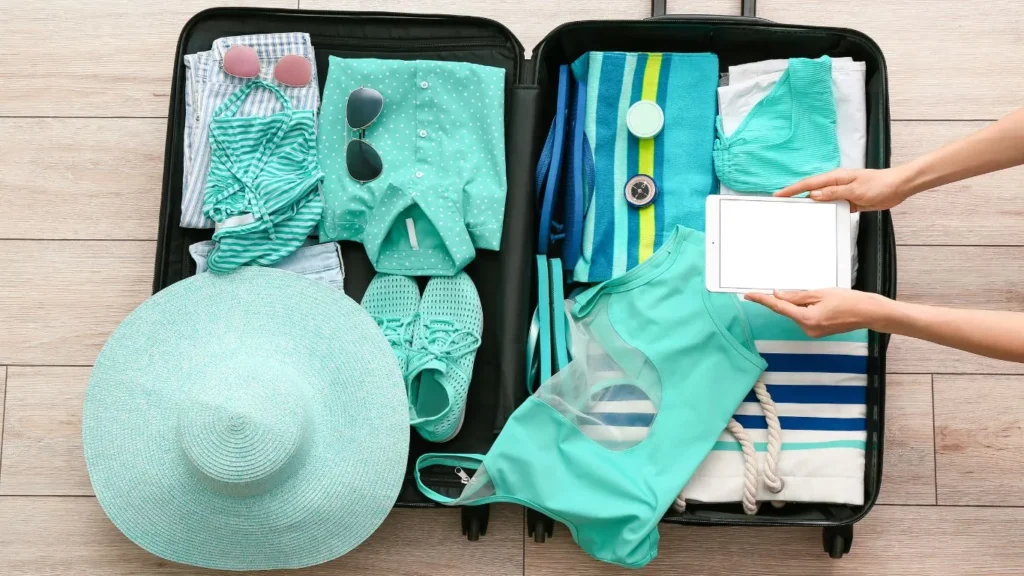
The trick to getting everything in and not getting wrinkled (or lost) is in the organization. The packing cubes -those little organizer bags – help you sort your clothes by type or by day, and also keep things tidy throughout the trip. Keep shoes in separate bags to avoid soiling clothes, and place liquids in an airtight bag in case any spill.
The heavy objects should always be placed at the bottom of the suitcase.near the wheels to balance the weight. Leave a little free space in case you buy something during the trip, and if you are traveling with someone else, a very useful trick is to to share some of your clothes in the other person’s suitcase (and vice versa).. That way, if one gets lost, you’ll still have the basics to continue the trip with peace of mind.
Conclusion
Packing your suitcase may seem like a simple formality, but in reality it is the first step towards freedom. first step to freedom of the trip. When you prepare your luggage with intention, you avoid scares, unnecessary purchases and make sure you have everything you need to enjoy the experience from the very first moment.
This list of things to take on a trip is much more than a checklist: it is an invitation to travel without stress, to live each moment lightly and to be ready for whatever comes. Because in the end, the best luggage is the one that leaves room in your mind for what really matters… live!
What about you, do you have any must-haves that you always carry with you and can’t miss in your suitcase?
I’ll love to discover new travel tricks! I’ll read you in the comments 😊
You may also be interested in reading:
- Best eSIM for travel: Holafly
- 21 tips for traveling with children and not die trying
- How to use a VPN while traveling
- What is a hostel, a hotel and a hostel?
- What international roaming is and how to activate it on your cell phone
- The best travel apps and must-have websites to make traveling easier
Download the checklist
To make it even easier for you, we have prepared a checklist that you can download and take with you.










